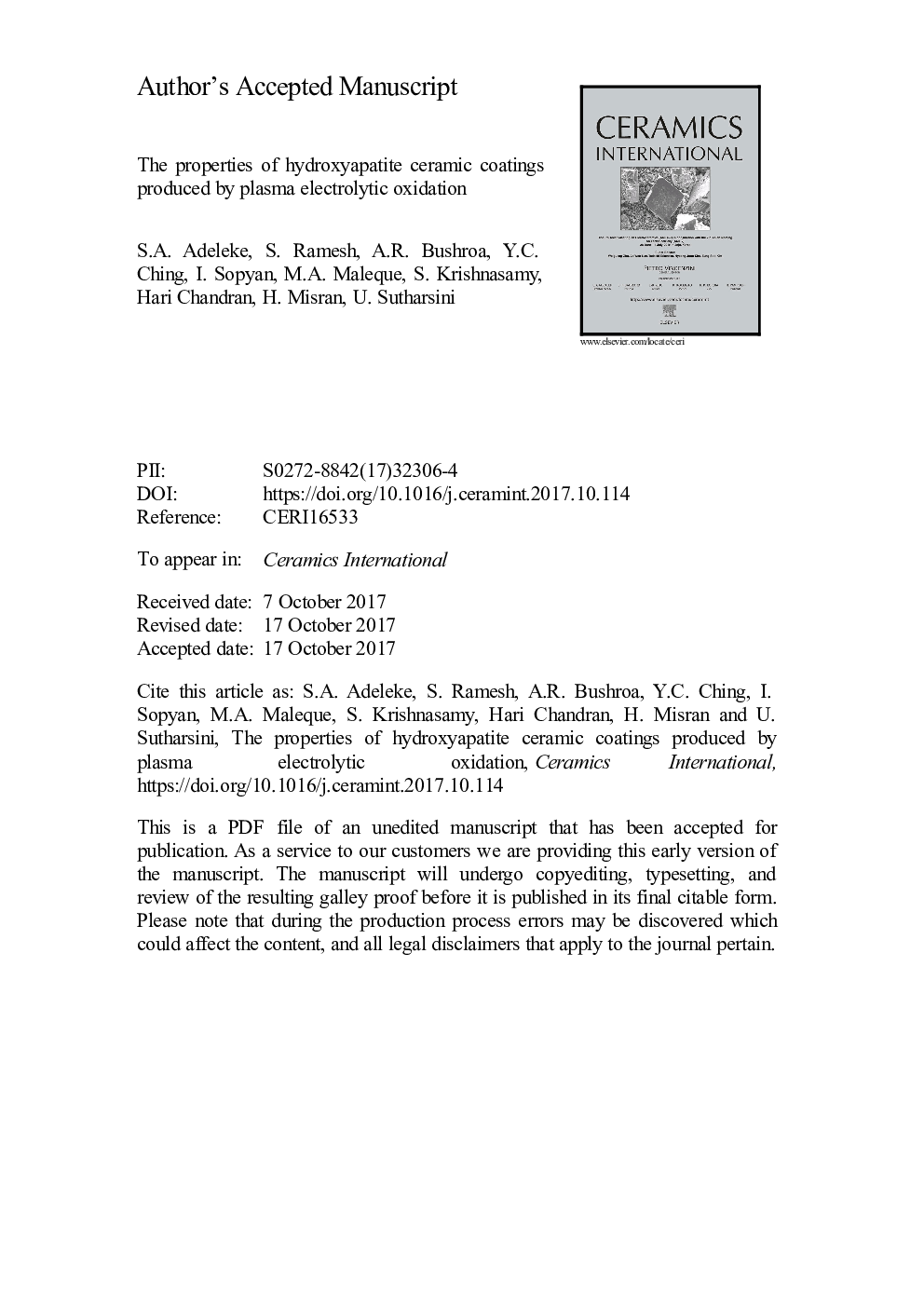| Article ID | Journal | Published Year | Pages | File Type |
|---|---|---|---|---|
| 7889066 | Ceramics International | 2018 | 35 Pages |
Abstract
Calcium phosphate coatings produced on the surface of Ti6Al4V by plasma electrolytic oxidation (PEO) using different concentrations of hydroxyapatite (HA) in a 0.12Â M Na3PO4 (NAP) electrolyte solution was investigated. It was found that the amount of calcium phosphate particles infiltrated into the coating layer as well as the thickness and the surface roughness of the coating increased with increasing HA concentration. The porosity of the ceramic coatings indicated an inverse relationship with the concentration of HA particles dispersed in the NAP solution. The result also demonstrates that higher scratch adhesive strength was achieved using 1.5Â g/L HA solution, producing a critical load of 2099Â mN, while 0Â g/L HA only produced a critical load of 1247Â mN. The adhesion becomes independent of thickness when the concentration of HA exceeds 1.5Â g/L. The failure of the coating was characterized by large periodic hemispherical chipping, while intermittent delamination was noticed with the coating embedded with HA particles. This study demonstrate the viability of using PEO to produce a thin layer of HA ceramic coating on Ti6Al4V suitable for biomedical applications.
Related Topics
Physical Sciences and Engineering
Materials Science
Ceramics and Composites
Authors
S.A. Adeleke, S. Ramesh, A.R. Bushroa, Y.C. Ching, I. Sopyan, M.A. Maleque, S. Krishnasamy, Hari Chandran, H. Misran, U. Sutharsini,
